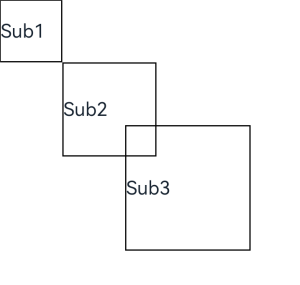harmony 鸿蒙Custom Component Lifecycle Callbacks
Custom Component Lifecycle Callbacks
The lifecycle callbacks of a custom component are used to notify users of the lifecycle of the component. These callbacks are private and are invoked by the development framework at a specified time at runtime. They cannot be manually invoked from applications.
NOTE
Promise and asynchronous callback functions can be used in lifecycle functions, for example, network resource getters and timer setters.
Do not use async await in lifecycle functions.
aboutToAppear
aboutToAppear?(): void
Invoked after a new instance of the custom component is created and before its build function is executed. You can change state variables in the aboutToAppear function. The change will take effect when you execute the build function next time.
aboutToDisappear
aboutToDisappear?(): void
Invoked before the destructor of the custom component is consumed. Do not change state variables in the aboutToDisappear function as doing this can cause unexpected errors. For example, the modification of the @Link decorated variable may cause unstable application running.
Example 1:
// xxx.ets
@Entry
@Component
struct CountDownTimerComponent {
@State countDownFrom: number = 10
private timerId: number = -1
aboutToAppear(): void {
this.timerId = setInterval(() => {
if (this.countDownFrom <= 1) {
clearTimeout(this.timerId) // Clear the timer when the value of countDownFrom is less than or equal to 1.
}
this.countDownFrom -= 1
}, 1000) // The value of countDownFrom decreases by 1 every second.
}
aboutToDisappear(): void {
if (this.timerId > 0) {
clearTimeout(this.timerId)
this.timerId = -1
}
}
build() {
Column() {
Text(`${this.countDownFrom} sec left`)
.fontSize(30)
.margin(30)
}.width('100%')
}
}

The example above shows that lifecycle functions are critical for CountDownTimerComponent to manage its timer resources. Similar functions include loading resources asynchronously from the network.
onPageShow
onPageShow?(): void
Invoked each time when a page is displayed. This callback is used in the routing process or scenarios where the application is switched to the foreground or background. Only the custom components decorated by @Entry take effect.
onPageHide
onPageHide?(): void
Invoked each time when a page is hidden. This callback is used in the routing process or scenarios where the application is switched to the foreground or background. Only the custom components decorated by @Entry take effect.
onBackPress
onBackPress?(): void
Invoked when a user clicks the back button. Only the custom components decorated by @Entry take effect. If true is returned, the page processes the return logic and no page routing is performed. If false is returned, the default route return logic is used. If the return value is not set, the value false is used.
Example 2:
// xxx.ets
@Entry
@Component
struct IndexComponent {
@State textColor: Color = Color.Black
onPageShow() {
this.textColor = Color.Blue
console.info('IndexComponent onPageShow')
}
onPageHide() {
this.textColor = Color.Transparent
console.info('IndexComponent onPageHide')
}
onBackPress() {
this.textColor = Color.Red
console.info('IndexComponent onBackPress')
}
build() {
Column() {
Text('Hello World')
.fontColor(this.textColor)
.fontSize(30)
.margin(30)
}.width('100%')
}
}
onLayout9+
onLayout?(children: Array<LayoutChild>, constraint: ConstraintSizeOptions): void
Invoked when the custom component lays out its child components. Through this callback the component receives its child component layout information and size constraint from the framework. The state variable cannot be changed in the onLayout function.
Parameters
| Name | Type | Description |
|---|---|---|
| children | Array<LayoutChild> | Child component layout information. |
| constraint | ConstraintSizeOptions | Size constraint information of the parent component. |
onMeasure9+
onMeasure?(children: Array<LayoutChild>, constraint: ConstraintSizeOptions): void
Invoked when the custom component needs to determine its size. Through this callback the component receives its child component layout information and size constraint from the framework. The state variable cannot be changed in the onMeasure function.
Parameters
| Name | Type | Description |
|---|---|---|
| children | Array<LayoutChild> | Child component layout information. |
| constraint | ConstraintSizeOptions | Size constraint information of the parent component. |
LayoutChild9+
Provides the child component layout information.
| Name | Type | Description |
|---|---|---|
| name | string | Name of the child component. |
| id | string | ID of the child component. |
| constraint | ConstraintSizeOptions | Size constraint of the child component. |
| borderInfo | LayoutBorderInfo | Border information of the child component. |
| position | Position | Position coordinates of the child component. |
| measure | (childConstraint: ConstraintSizeOptions) => void | Method called to apply the size constraint to the child component. |
| layout | (LayoutInfo: LayoutInfo) => void | Method called to apply the layout information to the child component. |
LayoutBorderInfo9+
Provides the border information of the child component.
| Name | Type | Description |
|---|---|---|
| borderWidth | EdgeWidths | Edge widths in different directions of the child component. |
| margin | Margin | Margin areas in different directions of the child component. |
| padding | Padding | Padding areas in different directions of the child component. |
LayoutInfo9+
Provides the layout information of the child component.
| Name | Type | Description |
|---|---|---|
| position | Position | Position coordinates of the child component. |
| constraint | ConstraintSizeOptions | Size constraint of the child component. |
Example 3:
// xxx.ets
@Entry
@Component
struct Index {
build() {
Column() {
CustomLayout() {
ForEach([1, 2, 3], (index) => {
Text('Sub' + index)
.fontSize(30)
.borderWidth(2)
})
}
}
}
}
@Component
struct CustomLayout {
@BuilderParam builder: () => {}
onLayout(children: Array<LayoutChild>, constraint: ConstraintSizeOptions) {
let pos = 0
children.forEach((child) => {
child.layout({ position: { x: pos, y: pos }, constraint: constraint })
pos += 100
})
}
onMeasure(children: Array<LayoutChild>, constraint: ConstraintSizeOptions) {
let size = 100
children.forEach((child) => {
child.measure({ minHeight: size, minWidth: size, maxWidth: size, maxHeight: size })
size += 50
})
}
build() {
this.builder()
}
}

你可能感兴趣的鸿蒙文章
harmony 鸿蒙Multi-Language Capability
- 所属分类: 后端技术
- 本文标签: